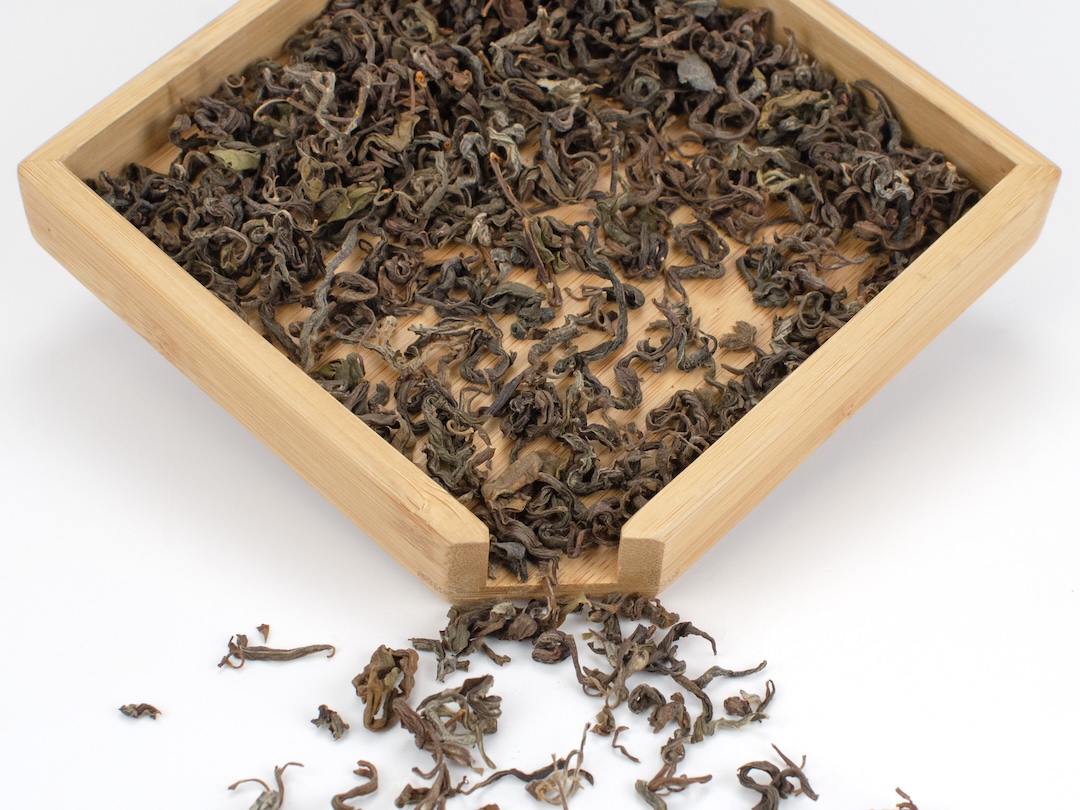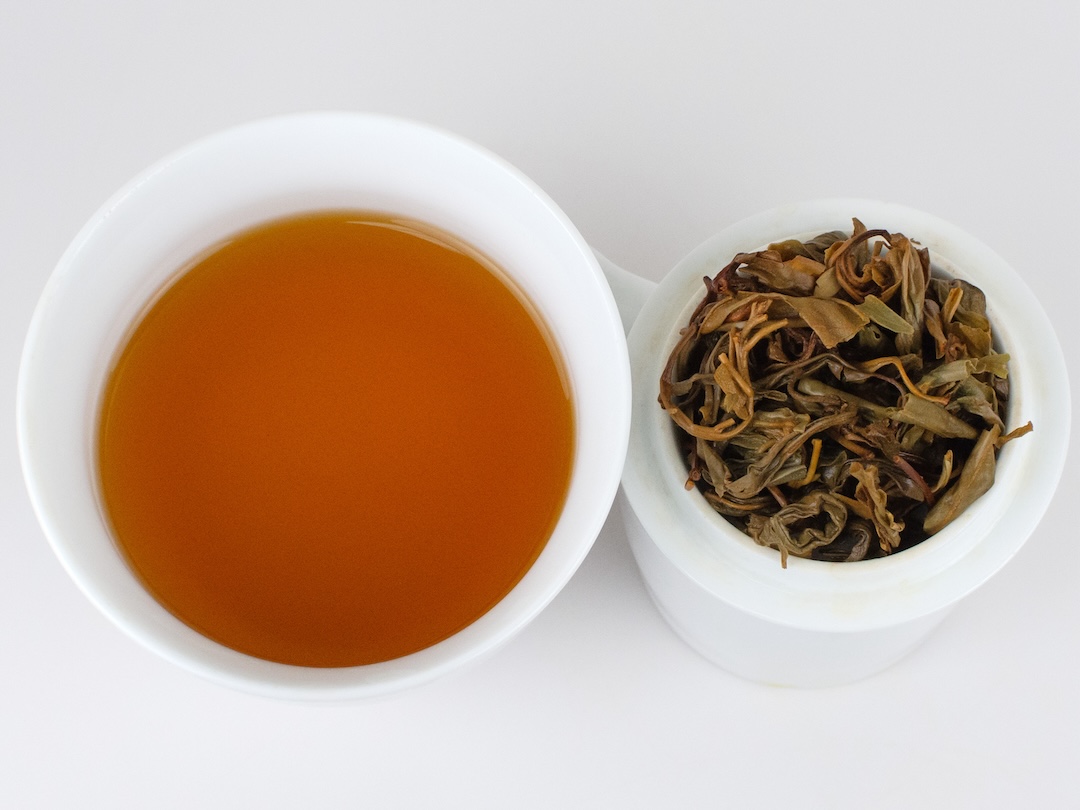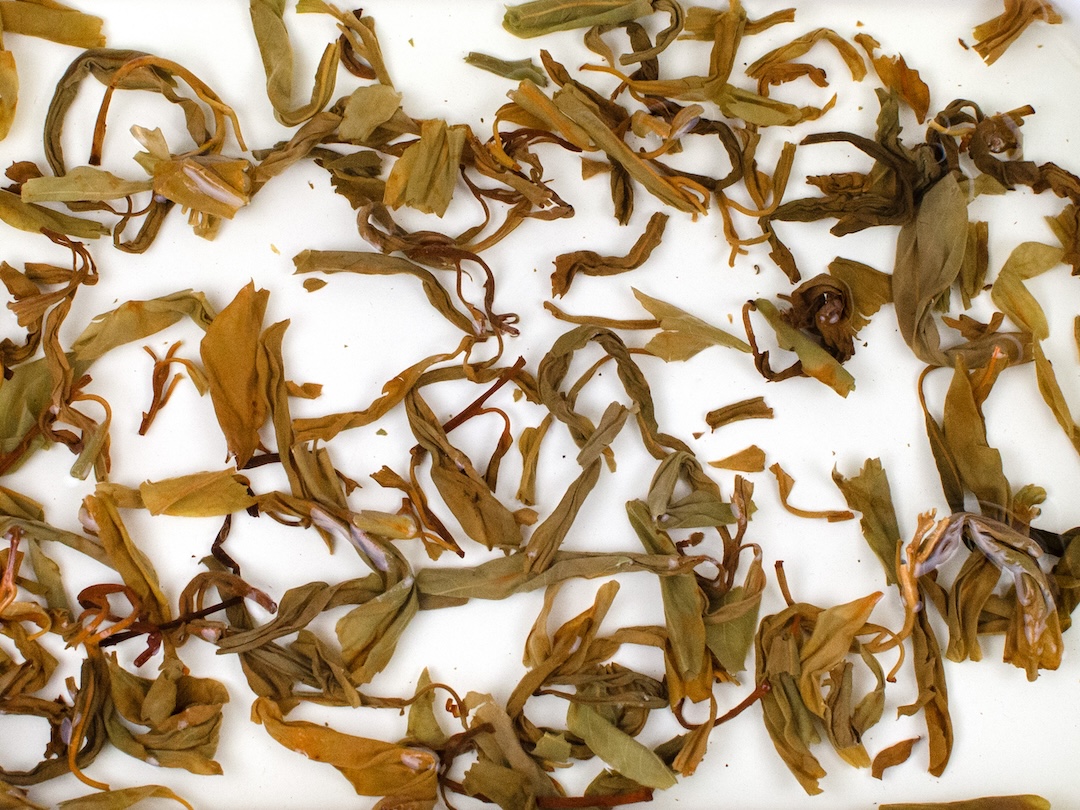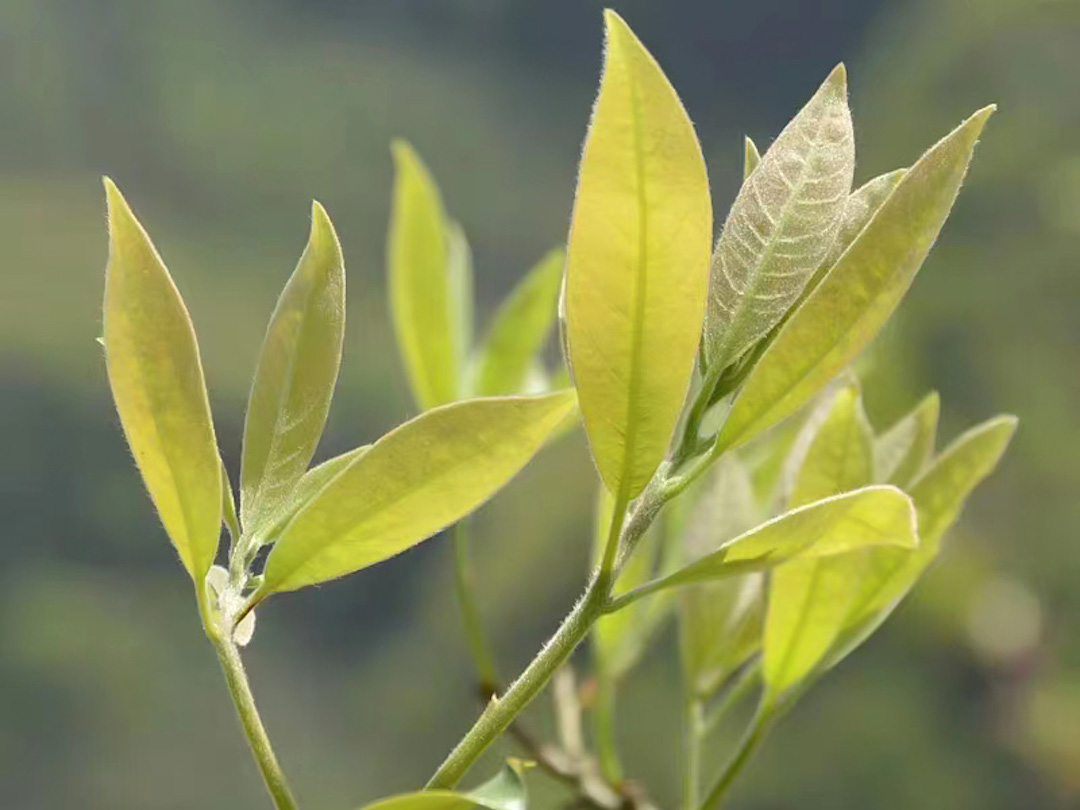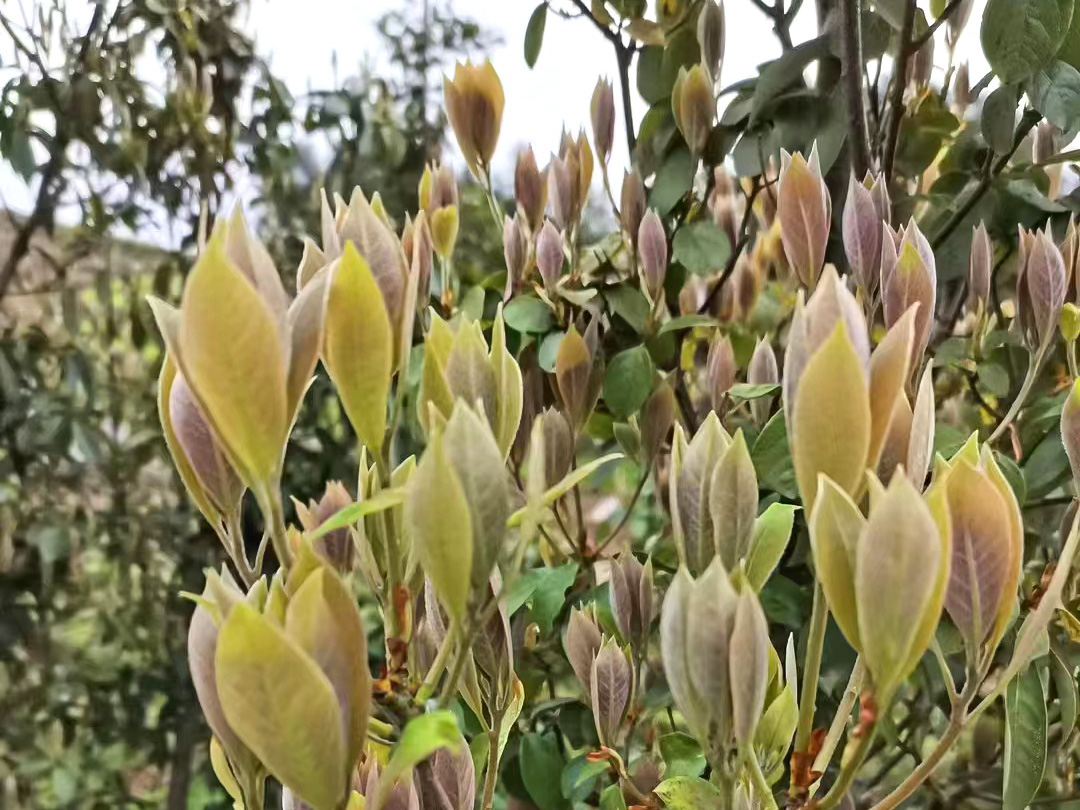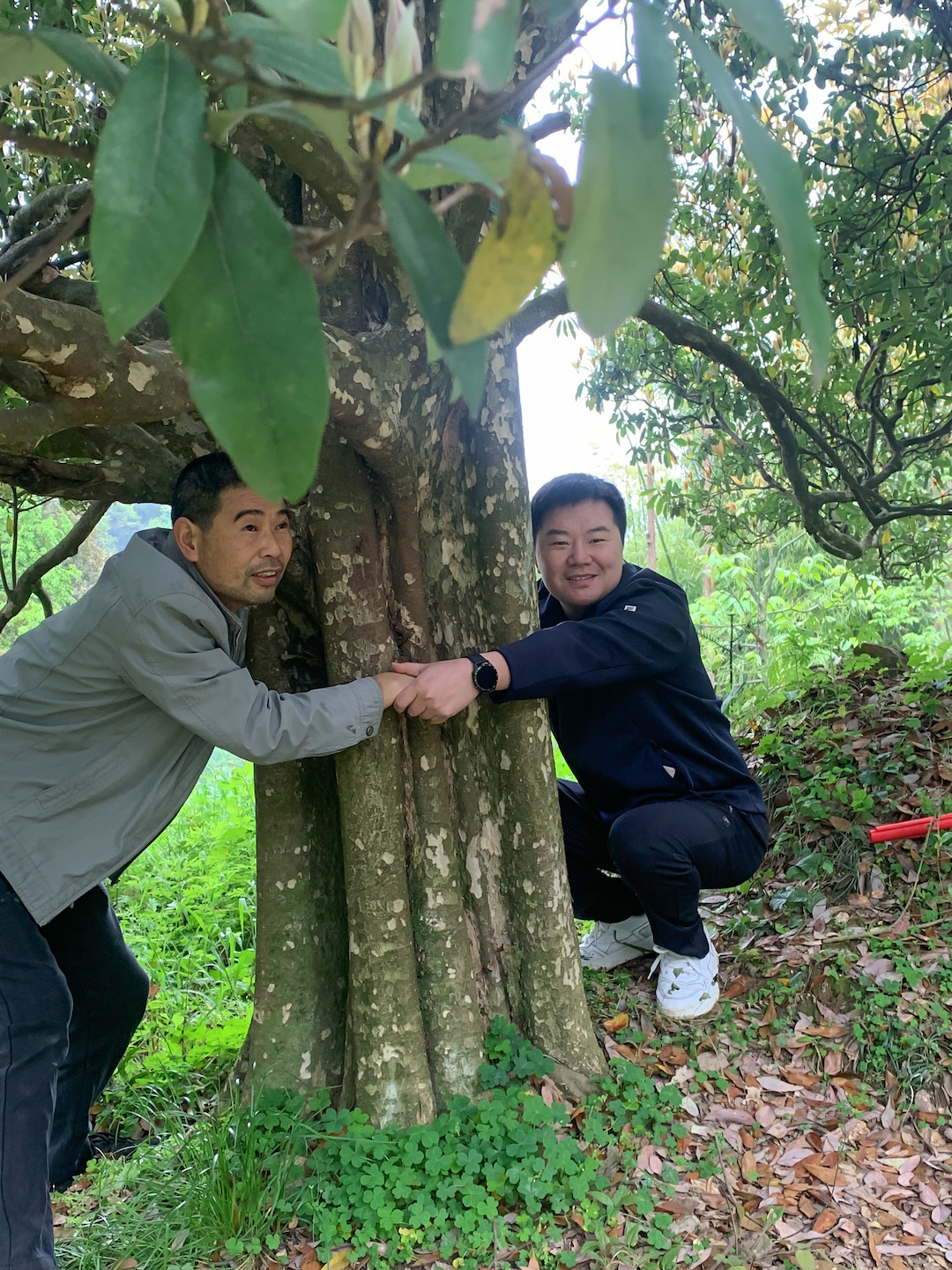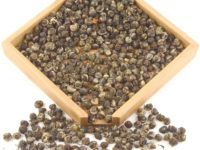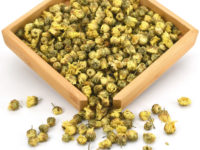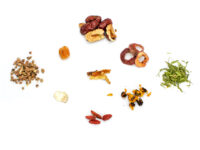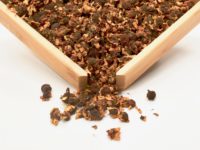Lao Ying Cha (Eagle Tree Tea)
Caffeine Free Herbal Tea 50 grams
A very cooling herbal tea from Chongqing in Sichuan, made from the local eagle trees. Slightly astringent at first, but quickly develops a refreshing airy sweetness and a strong camphor fragrance alongside its unique “orchid musk” aroma.
$18.00
8 in stock
- Tea Origin
- Wuxi County, Chongqing City, Sichuan Province, China
- Tea Bush
- Litsea coreana var. lanuginosa
- Harvest Time
- April
- Plucking Standard
- Tender young leaves
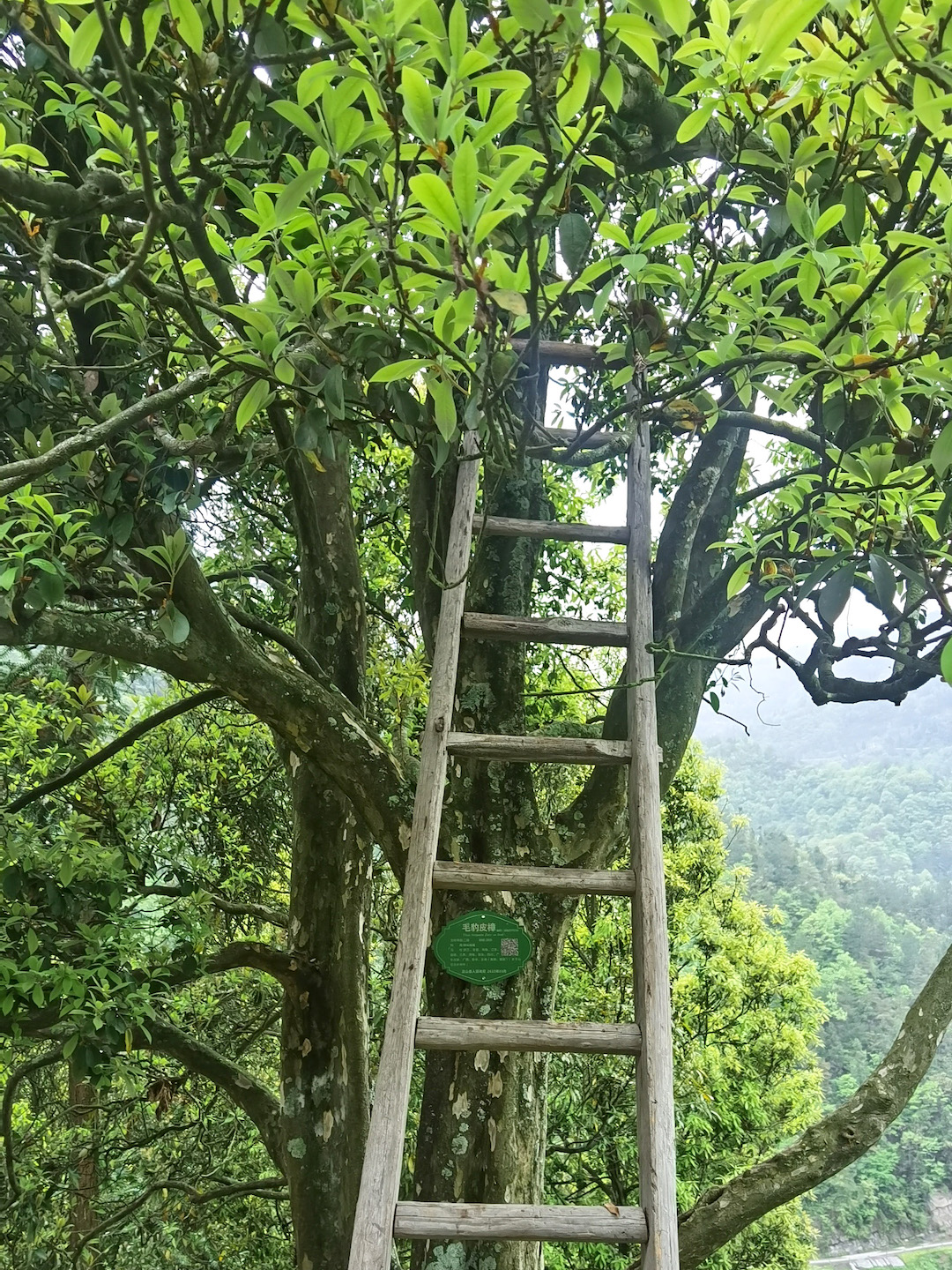
Eagle tree tea is a local herbal tea from the Three Gorges area of the Yangzi River, near Chongqing City. This herbal infusion is considered extremely cooling in traditional Chinese herbal medicine. Its golden-amber brew is slightly astringent at first, but quickly develops a refreshing airy sweetness and a strong camphor fragrance alongside its unique “orchid musk” aroma.
While it is visually similar and processed in much the same way as regular tea, this herbal tea is made from the young leaves of the plant known as the eagle tree. These trees can grow up to 100 feet tall and as a result are often the site where eagles build their nests, giving the tea made from them its common names of “eagle tea” and “hawk tea.” The tree’s fragrant oils are also thought to deter snakes from their nests. This tree in the laurel family is classified scientifically as Litsea coreana var. lanuginosa, also known in English as the leopard skin camphor tree.
Eagle tree tea: A local herbal tonic

In Wuxi, Chongqing, and the larger Yangtze River Basin, the regional cuisine tends toward spicy food to counteract the humid and hot weather. But in Chinese herbal tradition, spicy food is thought of as very warming. To balance out this warming effect, the common custom in the area is to drink the particularly cooling eagle tree tea as a tonic for relief from the spice and the humid weather. Many Chongqing restaurants selling noodles and hot pot will also make free eagle tea available so you can pour yourself a cup to go with your food.
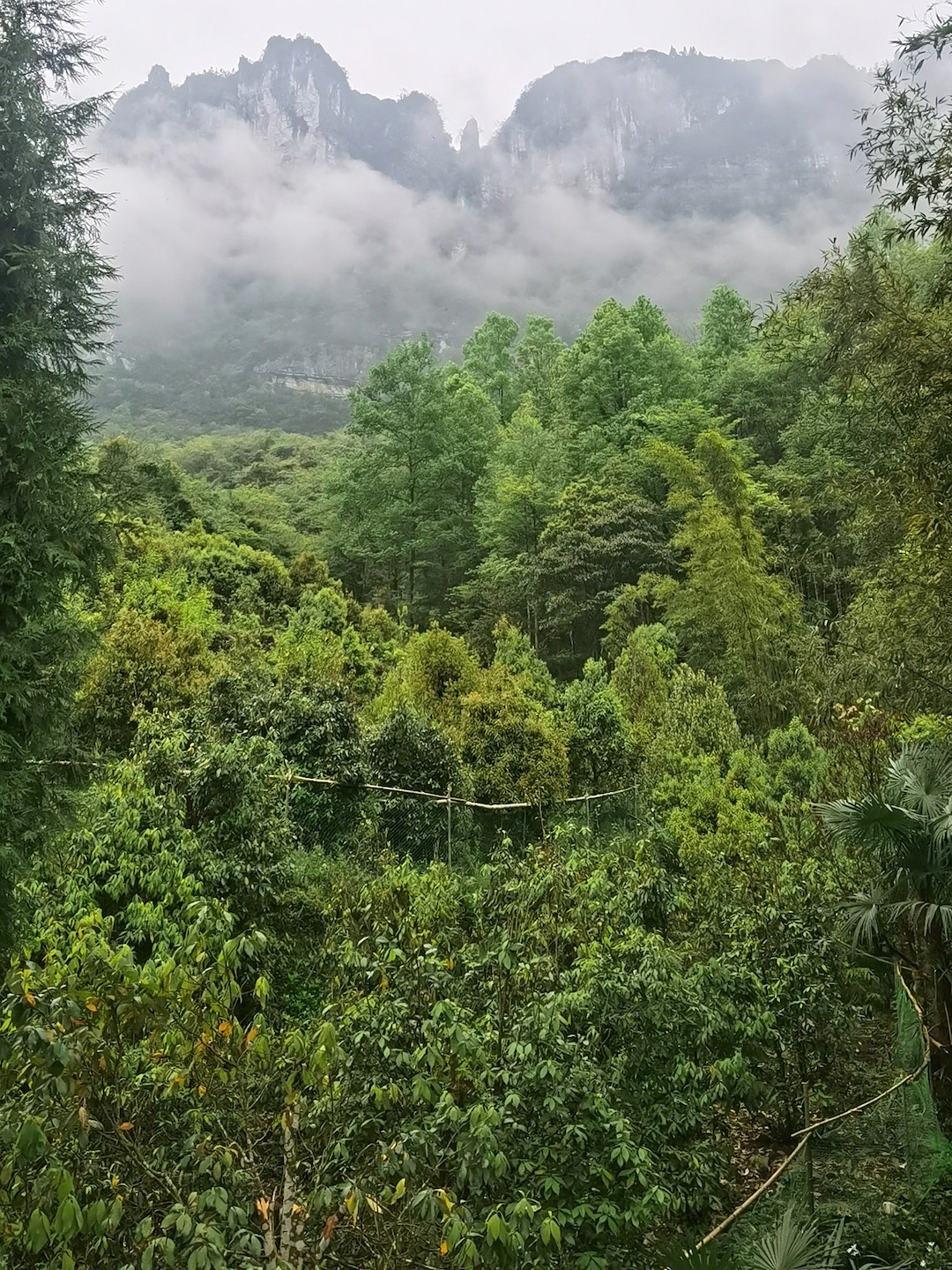
This local herbal tea comes from Seven Cups owner Zhuping’s hometown of Chongqing. When she was a child in the 1970s, most people living there did not drink ‘real’ tea made from the Camellia sinensis plant. She remembers people drinking eagle tea on the streets and alleys, and that was what she knew as ‘tea’ growing up. She only learned much later that it was an herbal tea made from the local eagle trees, rather than a true tea made from tea trees or bushes.
Processing Eagle Tree Tea
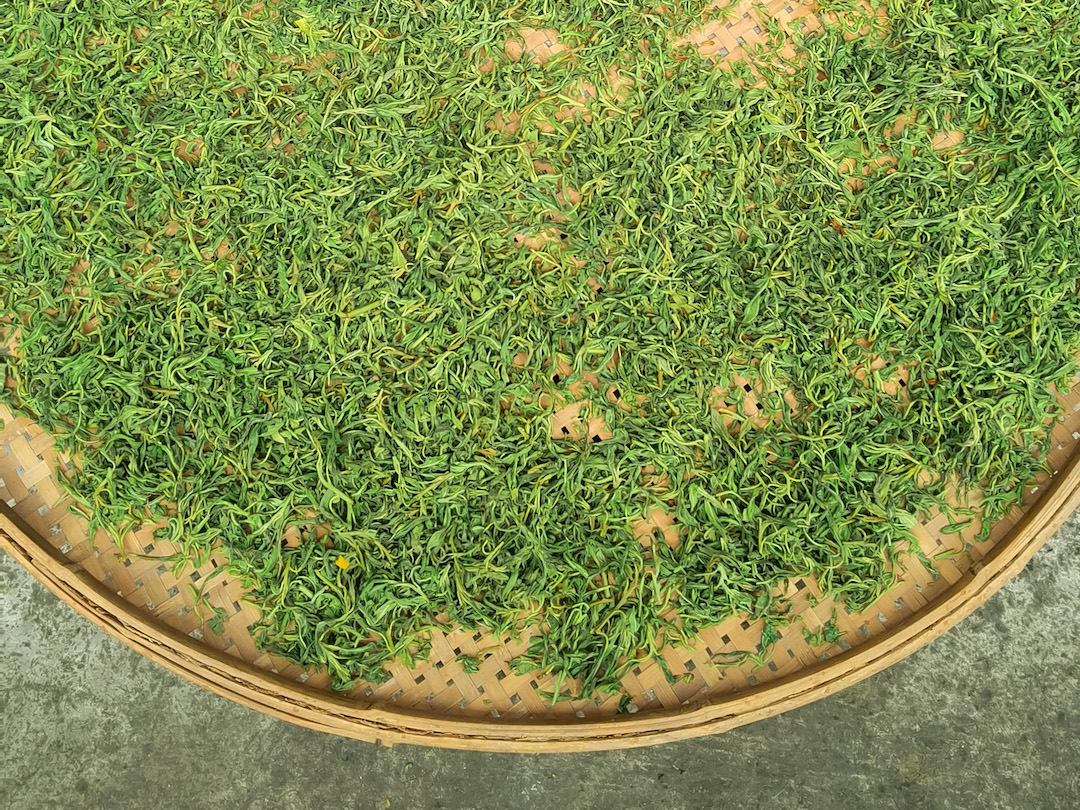
Leaves from the treetops of old eagle trees are harvested at the end of April, when they are still young and tender with a pinkish, yellow-green coloration. Much like regular tea, the leaves are spread on trays and withered indoors at a constant temperature of 25-28°C and stirred regularly until soft. After that, the leaves are fired in a wok at a low temperature of 100-150°C and withered further to a moisture content of about 60%. The fired leaves are then kneaded by machine for 30 minutes, giving them their twisted shape.
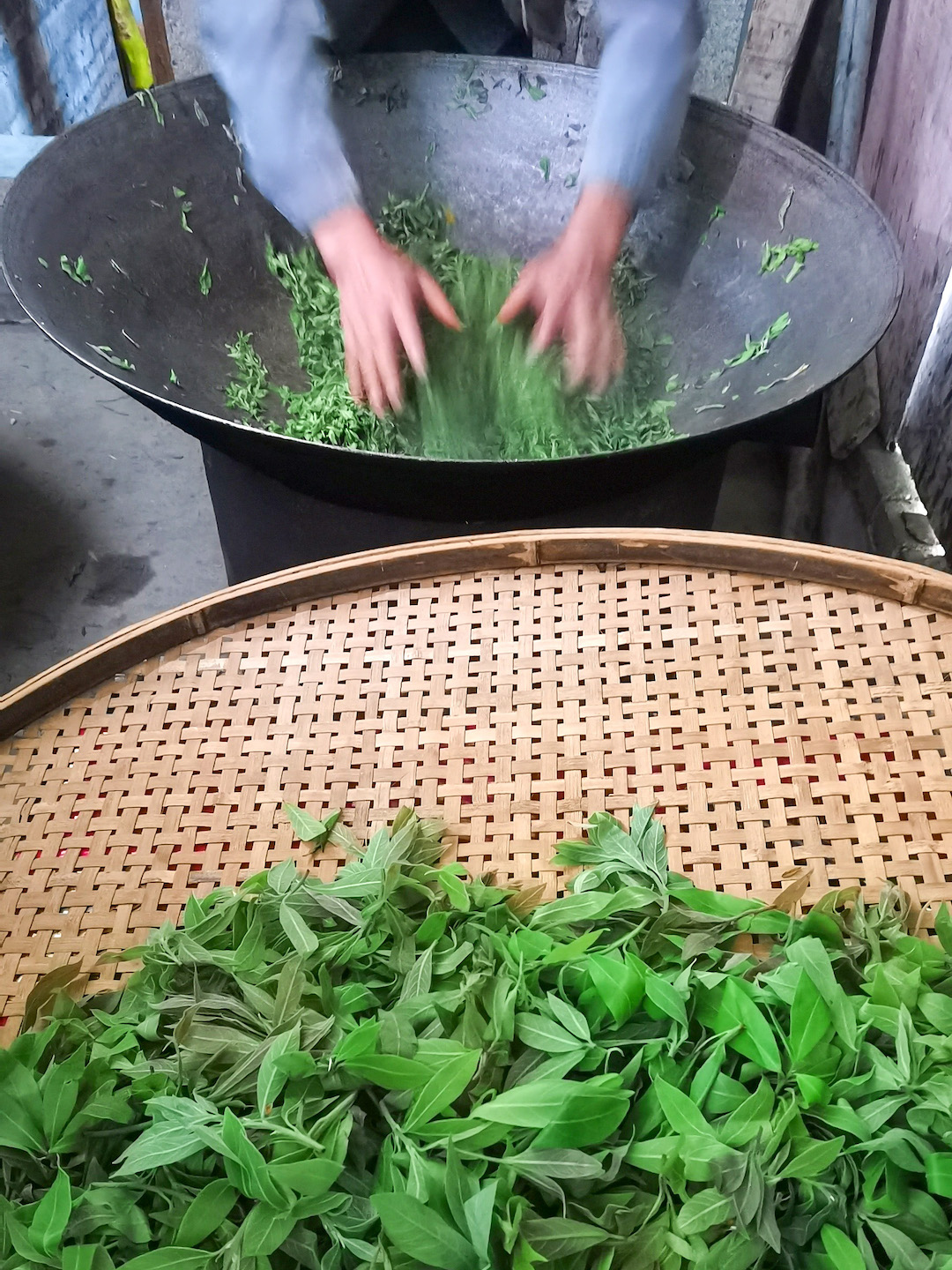
Finally, the kneaded leaves are baked in an oven at 80°C to dry for about 40 minutes until the moisture content is within 9%. After a period of storage, the eagle tea is roasted once again briefly at 180°C for 3-5 minutes to enhance its fragrance. The finished tea is sorted to remove broken leaves and stems and then irradiated for 20 minutes under ultraviolet light before packaging and storage.

